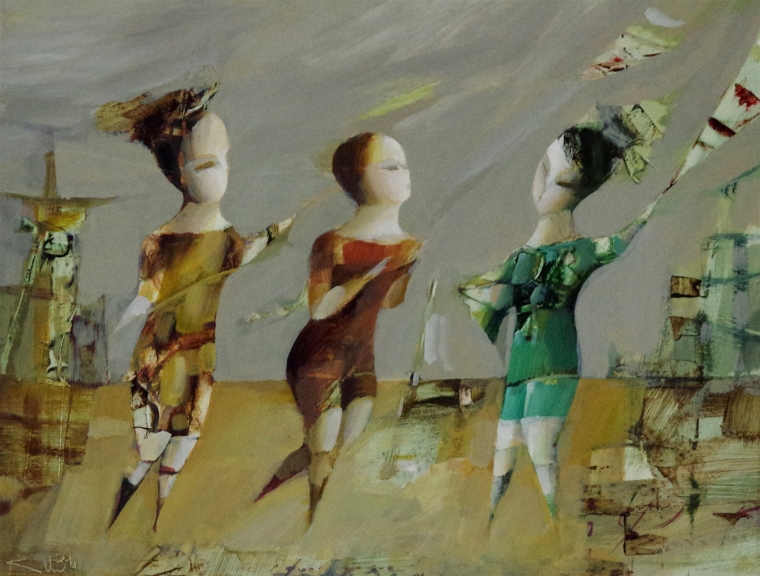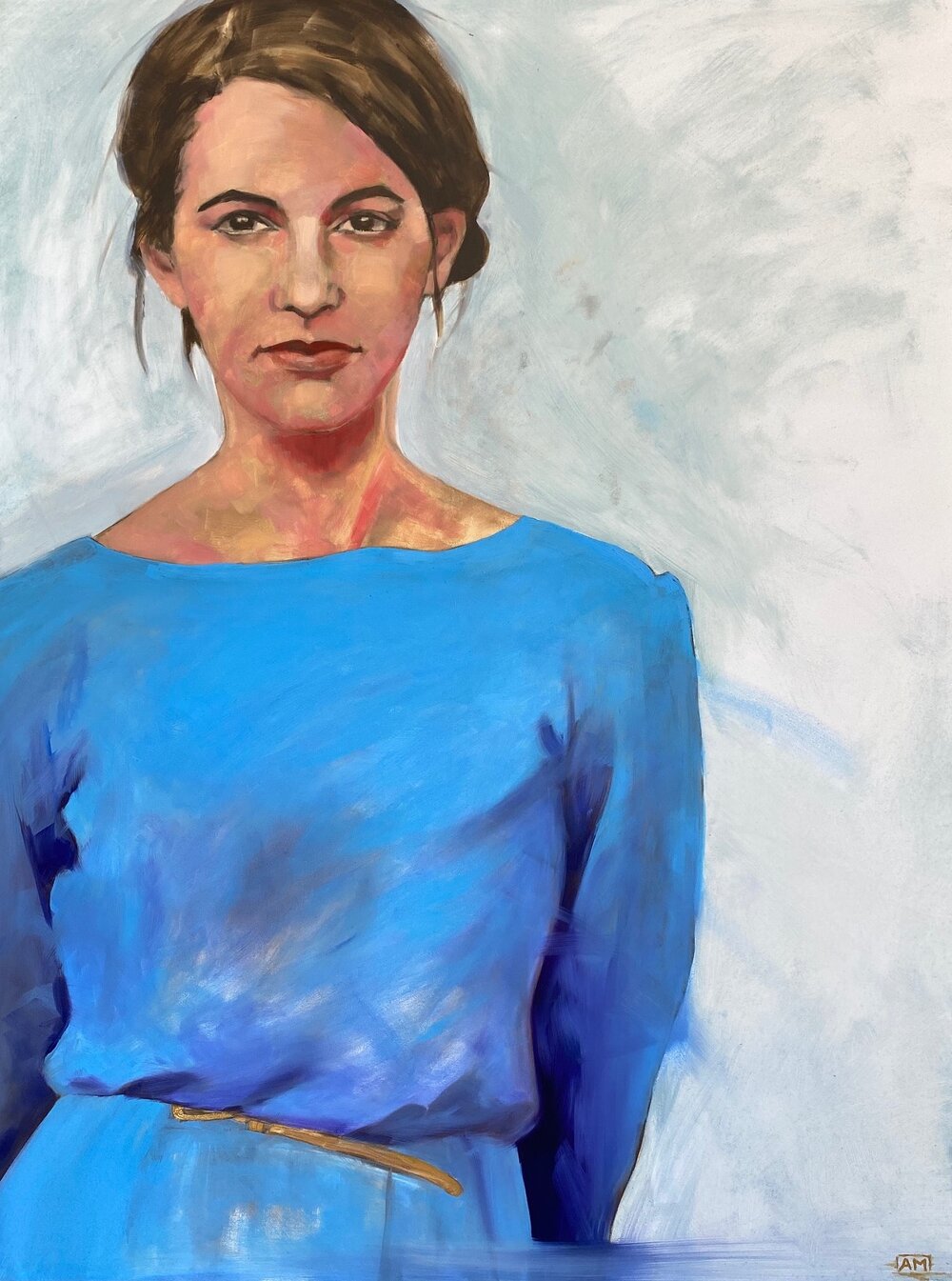The Development of Figurative Oil Paint: Comprehending Its Historical Significance and Modern Interpretations
The evolution of figurative oil painting functions as an engaging lens with which to take a look at the interaction between creative expression and historic context. From the careful naturalism of the Renaissance to the emotive power of the Baroque, each age has contributed layers of meaning and method to this ageless medium. Contemporary artists, drawing from this abundant heritage, are now reinterpreting the human figure in ways that challenge typical narratives. As we explore these transformations, one have to think about how the dialogue between present and past informs not just creative practice yet likewise social reflections in a significantly complicated globe.
Origins of Metaphorical Oil Painting
The beginnings of metaphorical oil painting can be mapped back to the early Renaissance in Europe, especially in the 15th century. This duration marked a considerable separation from the level depictions and rigid types particular of medieval art. Artists started to discover naturalism, emphasizing the human figure and its psychological expression. The development of oil paint enabled better deepness of color and detail, improving the realistic look and vibrancy of their job.

In this transformative age, figures were frequently portrayed within contextually rich settings, showcasing not just their physical attributes yet additionally their emotional states. Pioneers such as Jan van Eyck and Titian utilized the medium's flexibility, employing layering techniques to attain luminance and structure. This advancement assisted in the representation of complex materials and the subtleties of skin tones, adding to the development of portrait and narrative scenes.
Moreover, the Renaissance emphasis on humanism cultivated an admiration for uniqueness, which consequently affected musicians to create even more vibrant and relatable figures - figurative oil painting. Consequently, metaphorical oil painting became a powerful lorry for storytelling and psychological interaction, laying the groundwork for future imaginative movements and designs
Key Historic Movements
Substantial historical activities have formed the evolution of metaphorical oil painting, each contributing unique approaches and strategies that broadened the tool's possibilities. The Renaissance noted a pivotal minute, emphasizing realism and the human kind, with artists like Leonardo da Vinci and Michelangelo pushing the borders of anatomical precision and viewpoint. Following this, the Baroque era brought remarkable contrasts of light and shadow, exhibited by Caravaggio, who instilled religious themes with extreme emotionality.
The 19th century introduced Romanticism and Realistic look, where musicians such as Delacroix and Courbet tested timeless ideals, concentrating on specific expression and everyday life. The development of Impressionism additionally reinvented the medium by stressing the effects of light and color, resulting in a separation from typical representation.
In the early 20th century, motions like Expressionism and Cubism redefined metaphorical paint via abstraction and the exploration of emotional depth. Each of these motions not only showed the social adjustments of their times yet also laid the groundwork for contemporary interpretations. The interaction in between these historic activities has actually developed a rich tapestry of approaches and styles, influencing contemporary musicians in their quest of catching the human experience on canvas.
Methods and Products Development

Throughout the Baroque period, strategies such as chiaroscuro and sfumato emerged, enhancing the psychological resonance of metaphorical compositions. Musicians began to trying out glazes and impasto, adjusting structure and luminance. By the 19th century, technologies like using pre-mixed paints in tubes revolutionized availability, allowing musicians to repaint en plein air and catch the short lived effects of light.
The 20th century observed the introduction of artificial pigments and tools, which expanded the combination and modified the consistency of oil paints. In addition, the exploration of brand-new application strategies, such as combination blades and brushes of differing tightness, more diversified creative expression. Jointly, these developments show the developing partnership between materials, strategies, and the artistic vision fundamental in metaphorical oil painting.

Contemporary Analyses
Contemporary interpretations of figurative oil painting reflect a dynamic dialogue between custom and advancement, where musicians test established norms and explore diverse styles. This development materializes in different methods, as modern artists blend classic methods with contemporary ideas, commonly addressing social, political, and individual stories.
Lots of practitioners draw inspiration from historic jobs, yet they infuse their pieces with contemporary point of views, using the human form as a car for commentary on identification, sex, and society. Artists significantly explore abstraction, distortion, and blended media, which permits a more comprehensive analysis of the figure and its context.
Moreover, the usage of brilliant color schemes and unique structures frequently offers to interrupt traditional watching experiences, provoking crucial involvement from audiences. This change in focus extends past aesthetic appeals; it reflects an expanding awareness of the intricacies of human experience in an interconnected world.
As metaphorical oil paint continues to evolve, it stays a vital tool for exploring the subtleties of modern life, symbolizing both a regard for heritage and a commitment to dynamic thought. The outcome is an abundant tapestry of expression that resonates with the intricacies of the modern human problem.
Effect On Modern Art
The impact of figurative oil paint on modern-day art is profound, as it has continuously motivated a myriad of artistic motions and techniques throughout the 21st and 20th centuries. From Expressionism to Surrealism and beyond, the exploration of the human figure has continued to be a main theme, enabling artists Visit Website to communicate intricate feelings and narratives. This emphasis on figurative representation has actually caused a re-examination of typical techniques, resulting in ingenious strategies that blend realism with abstraction.
Moreover, contemporary musicians have actually welcomed metaphorical oil painting as a way to deal with political and social concerns, making use of the tool to test perceptions of identity, culture, and gender. The resurgence of interest in figurative work in recent years reflects a yearning for connection in an increasingly digital globe, where human experience and emotion are critical.
Additionally, the dialogue in between metaphorical oil painting and modern art is evident in the jobs of musicians such as Kehinde Wiley and Jenny Saville, who draw on historic recommendations while infusing their pieces with modern significance. Eventually, figurative oil paint continues to shape and redefine modern-day imaginative expression, highlighting its enduring value in the art globe.
Conclusion
The evolution of metaphorical oil painting highlights its historic importance and flexibility across Read Full Report different imaginative movements. Inevitably, figurative oil painting continues to be an essential medium for exploring the human experience, reverberating greatly in today's electronic landscape.
The advancement look what i found of metaphorical oil painting offers as an engaging lens through which to analyze the interaction in between creative expression and historic context.Substantial historic activities have shaped the development of metaphorical oil paint, each contributing distinct approaches and strategies that increased the medium's possibilities.As historical motions shaped the trajectory of metaphorical oil paint, the strategies and products employed by artists have also gone through considerable improvements. figurative oil painting.The influence of metaphorical oil paint on modern-day art is extensive, as it has actually consistently motivated a myriad of imaginative activities and techniques throughout the 21st and 20th centuries.The advancement of metaphorical oil paint emphasizes its historic relevance and versatility throughout different creative motions
Comments on “Discover the most effective Tips for Creating Stunning Figurative Oil Painting Artwork”